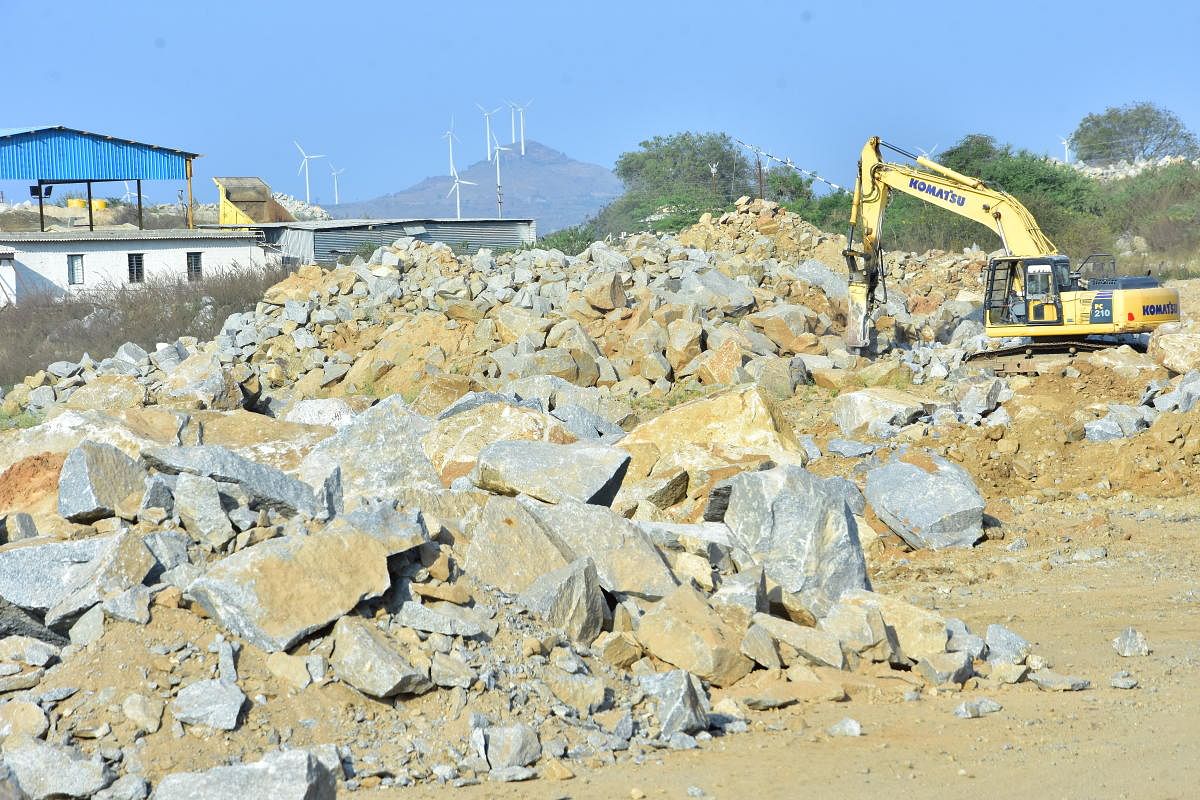

The government has, for long, failed to act against illegal mining activities around the Jogimatti wildlife sanctuary, 8 km from Chitradurga city. This has posed a serious threat to wildlife, flora and human habitats.
The forest department says all kinds of mining activities are prohibited within 10 km radius of the sanctuary, even as stone quarries and crusher units are still being operated.
Officials of the Mines & Geology department say the licences were issued before the declaration of Jogimatti as a wildlife sanctuary.
The diverse stands have harmed the environment of the region, adversely impacting the people of the region and groundwater in the drought-prone region.
ESZ proposal
Sources in the forest department said a proposal had been submitted to the government seeking a declaration of Jogimatti as an eco-sensitive zone (ESZ) in 2019.
But the matter is still at the government level and final notification has not been issued. The officials said they had written to the Mines & Geology department seeking suspension of all kinds of mining activities within 10 km radius of the sanctuary.
Jogimatti is spread across 10,049 hectares of forest land in the Chitradurga, Holalkere and Hiriyur taluks. The sanctuary is home to leopards, bears, peacocks, blackbucks, wild boars, besides 200 species of birds. It is also a source for ponds and streams, which come alive during the rainy season.
Speaking to DH, Deputy Conservator of Forests Chandrashekhar Nayak said the Mines & Geology department must stop mining activities till the issuance of final notification by the government of India, declaring Jogimatti as an ESZ.
“The district administration had submitted a proposal to the government asking it to reduce the radius of the proposed ESZ to two km, in the interest of development works. The government might ban all kinds of mining activities within a 1-km radius of the sanctuary and not 10 km.”
The delay in issuing final notification declaring Jogimatti as an ESZ has turned out to be a boon for mining licence holders.
According to officials of the Mines & Geology Department, 28 stone quarries are being operated within a 10-km radius of the sanctuary. Of them, two are within a two-km radius.
They have issued notice to owners of stone quarries, that they are operating mining activities in and around the wildlife sanctuary. But they have carried on with political influence.
Speaking to DH, district Mines & Geology department officer B M Lingaraju said stone quarry owners blast the boulders outside the 10-km radius of the wildlife sanctuary and bring them to the stone crusher units. “We have informed the higher officials about this and we are waiting for instructions.”
Though some stone quarries and stone crusher units have halted mining activities after the Shivamogga blast incident, many are still being operated.
Houses in nearby villages have developed cracks due to the mining activities. The dust generated during the process has affected cattle grazing in the area.
Murugesh, a resident of Agasarahalli, told DH that his house is just four years old, but the living room, bedroom and kitchen have developed cracks.
Thipperudrappa of the village said livestock get frightened due to the loud sound of the blasting work.
Senior geologist Basavaraj told DH that mining activities would not only create fractures deep within the earth but also harm the quality of groundwater. So, licensed stone quarry owners must minimise the blasting work, he said.